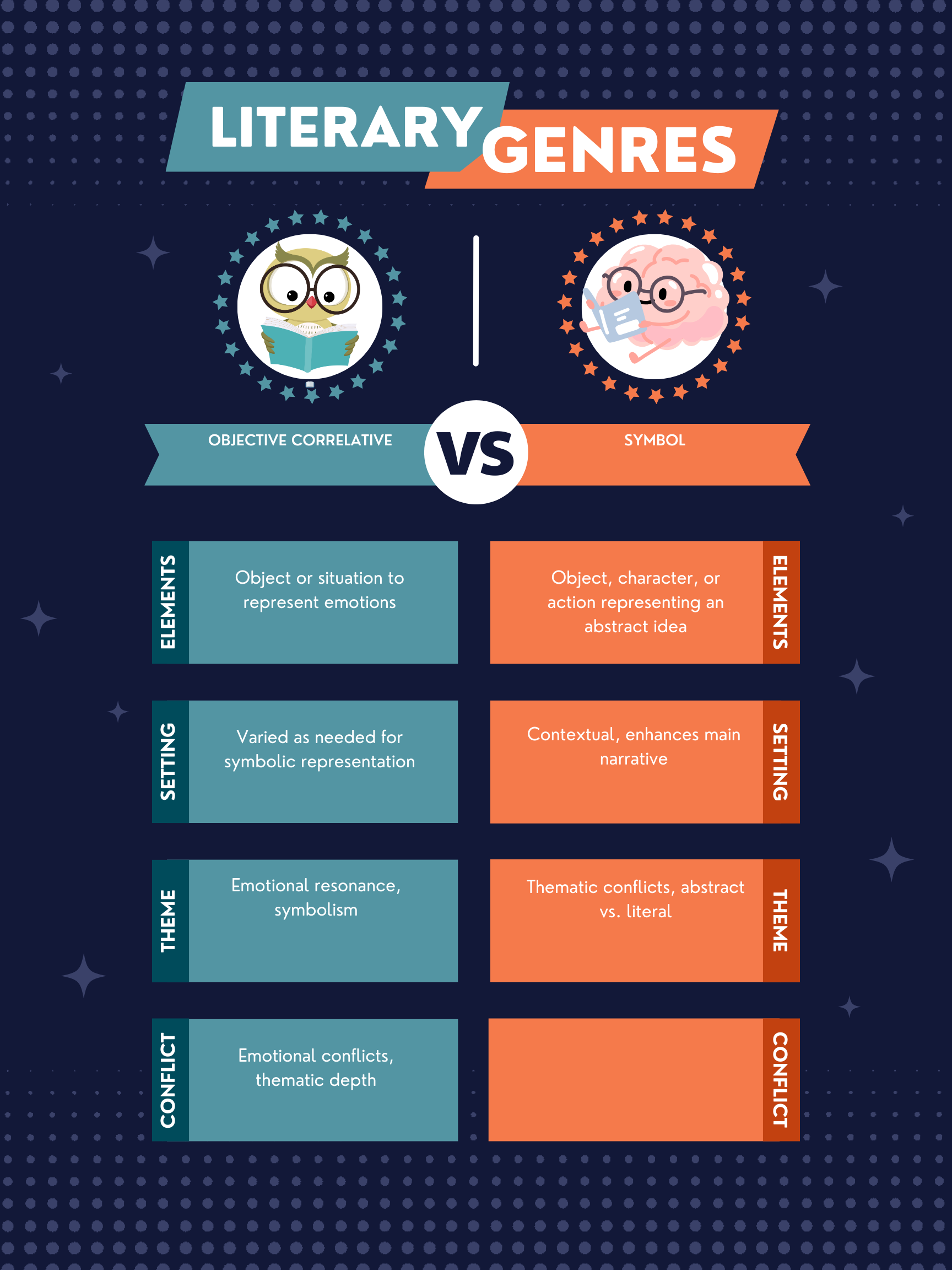The Objective Correlative is a concept where objects, situations, or events are used to express particular emotions; Symbols are objects, characters, figures, or colors used to represent abstract ideas or concepts.
Diving into the literary devices of Objective Correlative and Symbol illuminates the intricate ways writers convey emotions and themes. 🎨📚
Objective Correlative
Introduced by T.S. Eliot, the Objective Correlative involves using external objects, events, or situations to evoke a particular emotion in the reader that mirrors the character’s experience. It’s about showing rather than telling feelings. An example is the use of the decaying mansion in “The Fall of the House of Usher” by Edgar Allan Poe to embody the crumbling state of both the Usher family and the narrator’s psyche.
Symbol
A symbol is a mark, sign, or word that indicates, signifies, or is understood as representing an idea, object, or relationship. Symbols allow writers to suggest layers of meanings, adding depth to the narrative. In “The Great Gatsby” by F. Scott Fitzgerald, the green light at the end of Daisy’s dock symbolizes Gatsby’s unattainable dreams and the American Dream’s corruption.
Summary
| Literary Device | Definition | Purpose | Usage | Relevant Examples |
|---|---|---|---|---|
| Objective Correlative | A concept where objects, situations, or events are used to express particular emotions. | To evoke specific emotions related to the narrative. | Literature, poetry, film. | “The Fall of the House of Usher” by Edgar Allan Poe. |
| Symbol | Objects, characters, figures, or colors used to represent abstract ideas or concepts. | To suggest deeper meanings and add narrative depth. | Literature, poetry, film, visual arts. | “The Great Gatsby” by F. Scott Fitzgerald. |
Writing Tips
For Objective Correlative:
- Be Specific: Choose concrete elements that vividly evoke the intended emotion.
- Create a Connection: Ensure the correlation between the object and the emotion is clear and compelling.
- Use Subtly: Integrate the objective correlative naturally into the narrative, avoiding forced or obvious connections.
For Symbol:
- Layer Meanings: A symbol can have multiple interpretations; don’t limit it to a single meaning.
- Integrate Seamlessly: Symbols should enhance the story, not distract. They should feel like a natural part of the narrative.
- Reinforce Themes: Use symbols to reinforce the central themes or messages of your work.
FAQs
Can an object be both an objective correlative and a symbol?
Yes, an object can serve as an objective correlative to evoke specific emotions while also symbolizing broader themes or ideas.
How do I choose between using an objective correlative or a symbol?
Consider your narrative goals. If aiming to evoke specific emotions, an objective correlative might be more suitable. For broader thematic depth, a symbol can convey complex ideas effectively.
Exercise
Read the following excerpt: “The withered rose on the protagonist’s desk not only spoke of lost love but also symbolized the passage of time and the inevitability of change.”
Answer: This passage presents the rose as both an objective correlative for lost love (evoking specific emotions) and a symbol for broader concepts like the passage of time and change.
Other Interesting Literary Device Comparisons
- Metaphor vs Simile: Both compare two different things, but metaphors do so directly, while similes use “like” or “as.”
- Allusion vs Allegory: Allusions refer indirectly to other texts, events, or figures, whereas allegories use extended metaphors to convey deeper meanings throughout the narrative.
- Foreshadowing vs Irony: Foreshadowing hints at future events, while irony involves a discrepancy between expectations and reality, often creating a twist.
Understanding the nuanced use of Objective Correlative and Symbol can significantly enhance a narrative’s emotional and thematic depth, providing readers with a richer literary experience. 🌹✨

